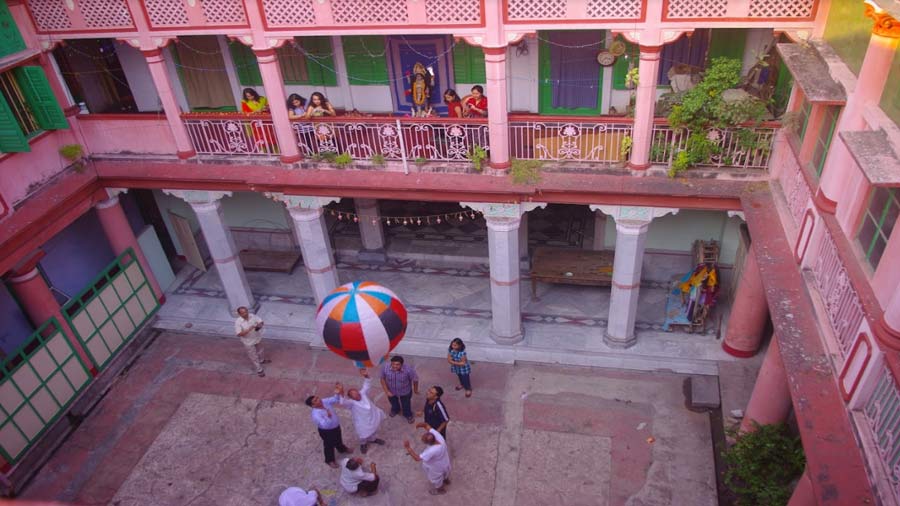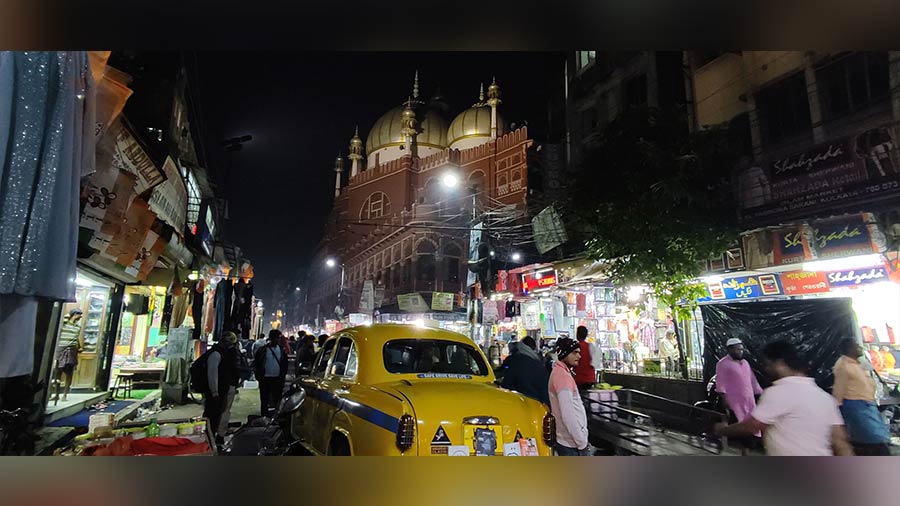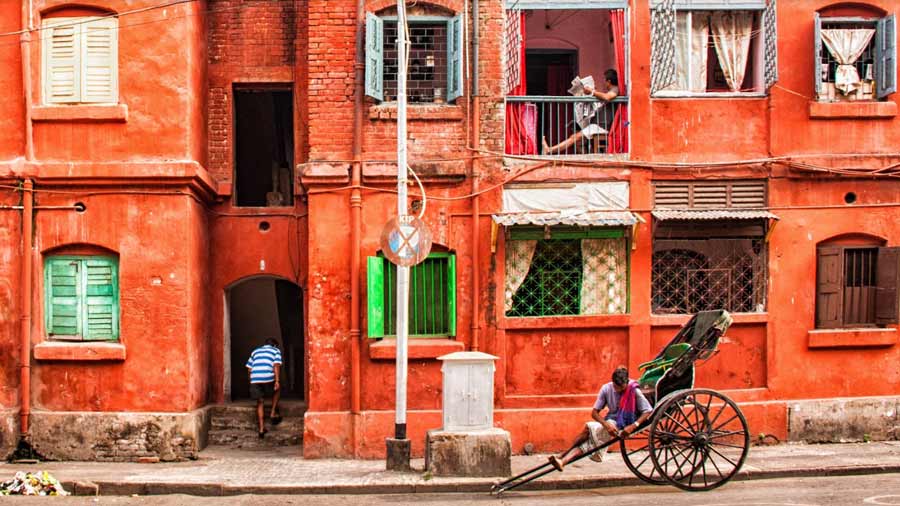In the Sovabazar area of north Kolkata, close to Hedua Park, is what was once known as Beadon Street. Today, the stretch is named Abhedananda Road, after a direct disciple of Ramakrishna Paramahamsa. A little beyond one end of the street is a square and a garden, once known as Beadon Square and now called Rabindra Kanan, and the narrow gully that shoots off Abhedananda Road is Beadon Row, the only one still with its colonial-era name.
The names might have changed, but this very old Kolkata street hosts some of the city’s most important landmarks. This is a look at the history and some of these landmarks.
The good and bad of Sir Beadon
Sir Cecil Beadon (1813-1880) was the third lieutenant governor general of Bengal between 1862 and 1867. While he is famous for having established the present Calcutta High Court after the amalgamation of the Supreme Court, the Sudder Diwani and Nizamat Adalat, Beadon is criticised for his horrific reluctance and aloofness during the 1866 Odisha famine. Ironically, during that time, British India exported over 200 million pounds of rice to Great Britain.
A walk down the old street
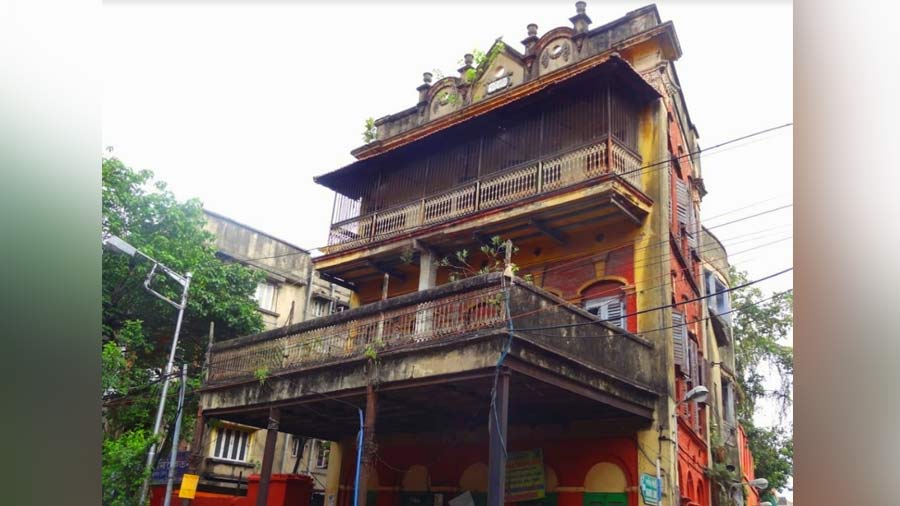
Peary Kutir, the residence of author and professor Peary Charan Sircar Subrata Ghose
On Abhedananda Road, just past the Duff hostel at the entry to Peary Row, stands an old mansion named Peary Kutir. This was the residence of Peary Charan Sircar (1823–1875), who was known for his rapid-reading textbooks that introduced a whole generation of Bengalis to the English language. Although he never completed his formal education, he was given the post of assistant lecturer at Presidency College. His book, First Book of Reading for Native Children, published in 1850, was widely popular.
A short distance from Peary Kutir is another sprawling mansion named Bholanath Dham. Apart from being the family home of Ajoy Dutta, who is known for having kept alive the art and Kali Puja tradition of making paper hot-air balloons called phanush, the house was also the residence of legendary Bengali film actor Chhabi Biswas.
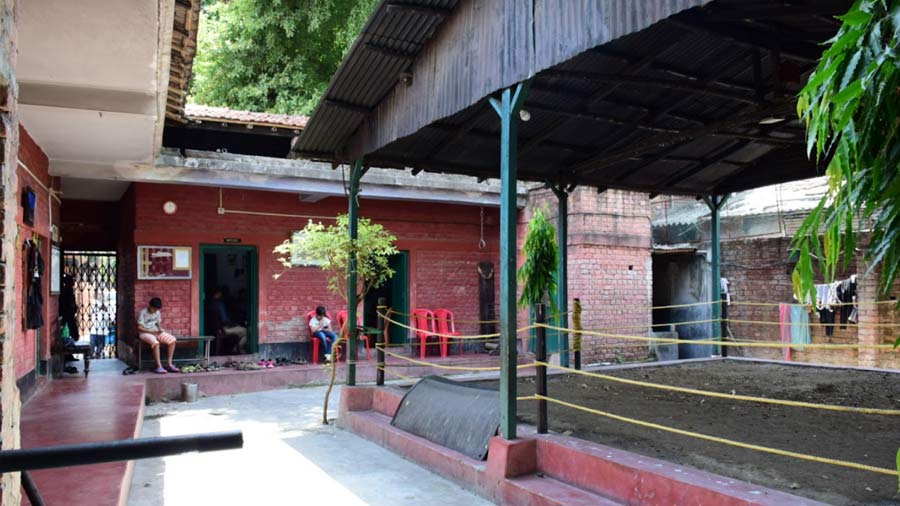
The interiors of the simple gym where Jatindra Charan Guha trained Aritra Biswas
The Scottish Church College, established in 1830 by Alexandar Duff, is a well-known landmark on the street. Near the college, the non-descript Goabagan Lane leads to a humble-looking gymnasium with a famed past. This is where wrestler and heavyweight champion Jatindra Charan Guha (1892-1972), popularly known by his ring name Gobar Goho, would train. He was the first Asian to win the World Light Heavyweight Championship in the United States in 1921.
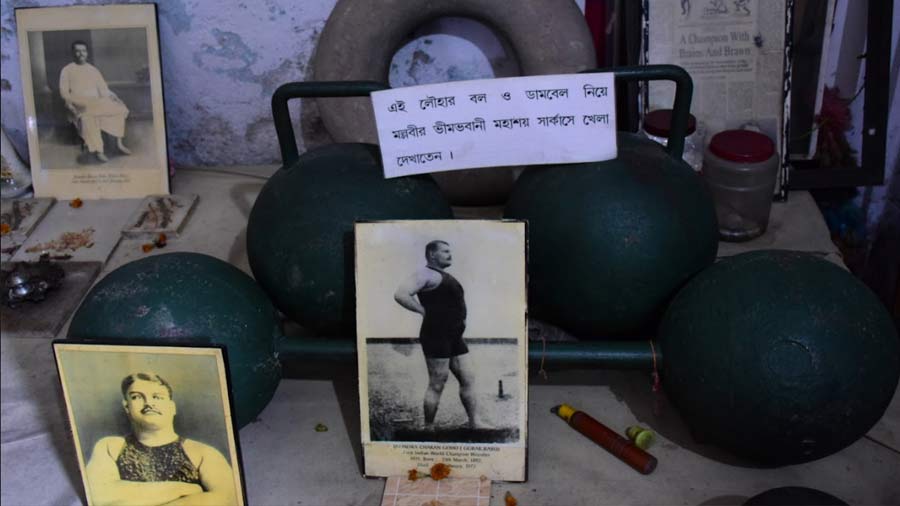
Images of Guha and the dumbbells he used Aritra Biswas
A little ahead near Hedua Park, a large house painted in white and with huge pillars stands on the right. It is not known to many that this was the ancestral house of Kashi Prasad Ghose. Ghose was a Bengali poet and the editor of the Hindu Intelligencer, an English language journal that was published in Calcutta and voiced the opinion of the bhadralok community. He was also known for his tappa songs and as the author of several prominent books.
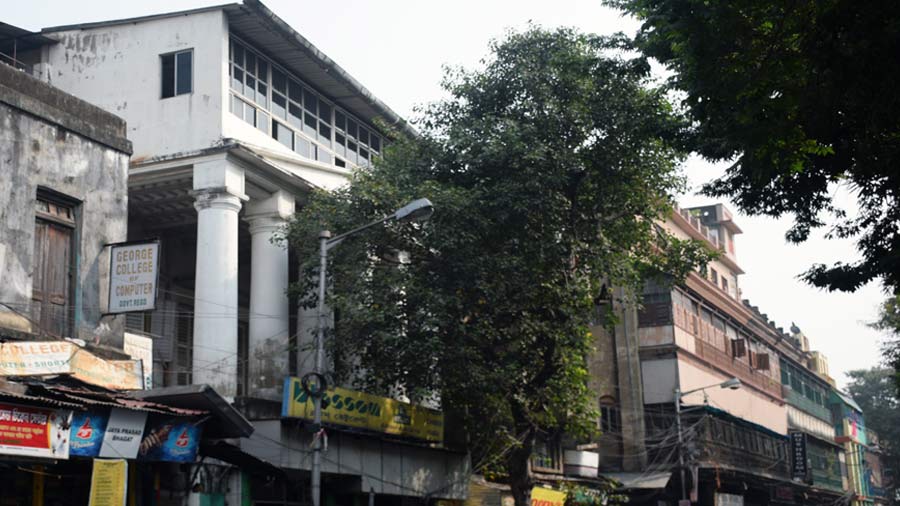
The ancestral house of Kashi Prasad Ghose is hardly known to locals Amitabha Gupta
The gems of Dhani Ghosh Sarani
Abhedananda Road extends into Dhani Ghosh Sarani, after crossing the premises of Bethune College. The college started as Kolkata’s first school for women and was later turned into a college. On its left in Bethune Row is a hidden heritage gem. A nondescript house stands in the gully, with a plaque in front of it that mentions the house belonged to Kartik Chandra Nun, a disciple of Brahmabandhav Upadhyay, who used to publish his magazines Sandhya, Sophia, Karali from this house.

The Nistarini Kali Temple of Nun family Amitabha Gupta
Brahmabandhav Upadhyay (born Bhavani Charan Bandyopadhyay) was a theologian, journalist and Indian freedom fighter with close ties with Ramakrishna Paramahamsa, Keshub Chandra Sen, Swami Vivekananda and Rabindranath Tagore. He was arrested and prosecuted on a charge of sedition for his publications and died at Campbell Medical College (now Nil Ratan Sircar Medical College) during his trial in 1907. Behind this house is the nine-pinnacled Nistarini Kali Temple of the Nun Family.

The mansion of Ramdulal Sarkar, considered the first Bengali millionaire Amitabha Gupta
Further down Dhani Ghosh Sarani stands the colossal mansion of Ramdulal Sarkar (also known by Ramdulal Dey), regarded as the first Bengali millionaire. He became a prominent name in the Indo-American trade and also had interests in stocks and shares, along with real estate.
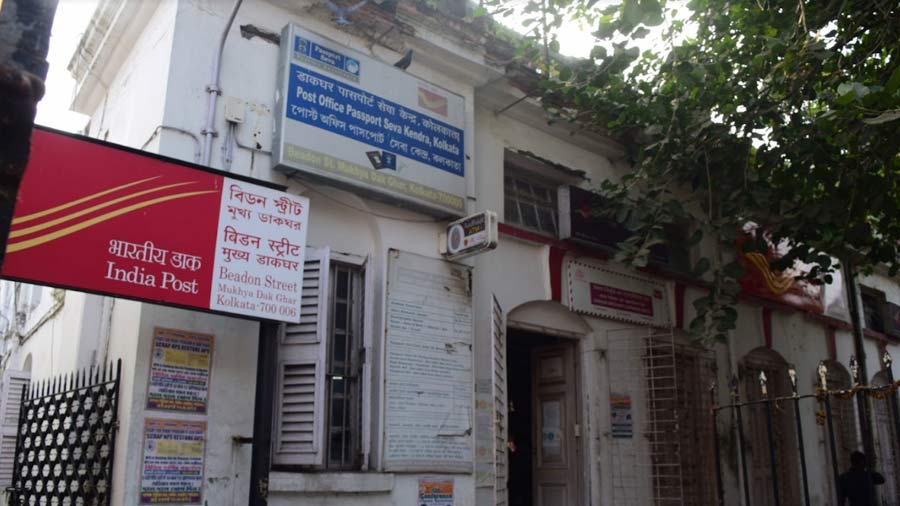
The Beadon Street Post Office, where once stood the city's first public playhouse, Bengal Theatre Amitabha Gupta
Opposite Ramdulal’s mansion is the Beadon Street Post Office at 9, Beadon Street, where once stood the Bengal Theatre (1873-1918) the first public playhouse in the city. It was modelled in the style of the old Lewis’s Royal Lyceum Theatre, which was a prefabricated corrugated iron structure that was located near the Ochterlony Monument or Shahid Minar.
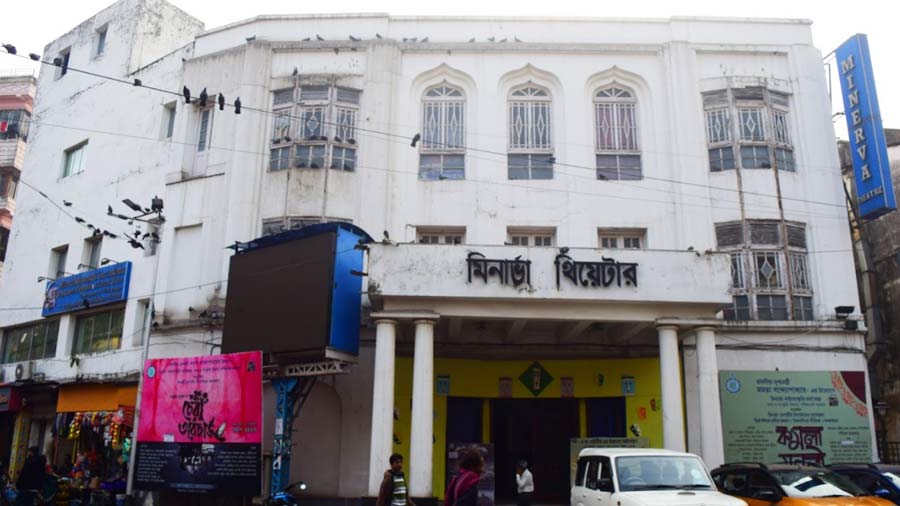
The Bengal Theatre was not the only one on the street. At 68, Beadon Street, once stood the original building of the famed Star Theatre, which changed names and hands several times before the building was demolished in 1931 during the construction of Central Avenue.
The theatre that remains today is a little ahead on Dhani Ghosh Sarani. The age-old Minerva Theatre still functions pretty well with modern renovations. Established in 1893 by Nagendra Bhusan Mukhopaddhaya, this is one of the few places where the first motion pictures of Bengal created by Hiralal Sen were screened. The maiden play held on this stage was 'Macbeth' and Sri Girish Chandra Ghosh is noted for having given the last spectacular performance of his life in this theatre.
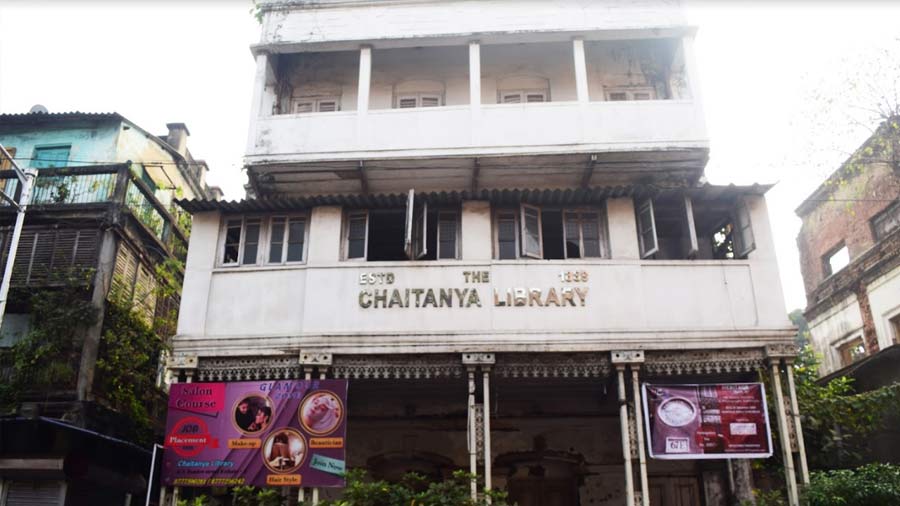
Chaitanya Library had eminent personalities like Rabindranath Tagore and Rev. Alexander Tomory as members Amitabha Gupta
Adjacent to the theatre is the Chaitanya Library, which was established in 1889 by Gaur Hari Sen and Kunj Behari Dutta and had eminent personalities like Rabindranath Tagore and Rev. Alexander Tomory (Principal of Scottish Church College, 1910) as members. Despite having a great collection of books, the interiors and its books are in a perilous situation and no authorities have taken the initiative of its conservation.
The walk ends at Rabindra Kanan Park, previously named Beadon Square, which is famous for hosting the 1896 Congress Session where Rabindranath Tagore sang Vande Mataram. The park was also utilised by freedom fighters during the 1905 Bengal Partition.
Break Free Trails conducts a Beadon Street Walking tour. Follow their social media handles (@breakfreetrails on Instagram and Facebook) to check the dates for the next walk.
